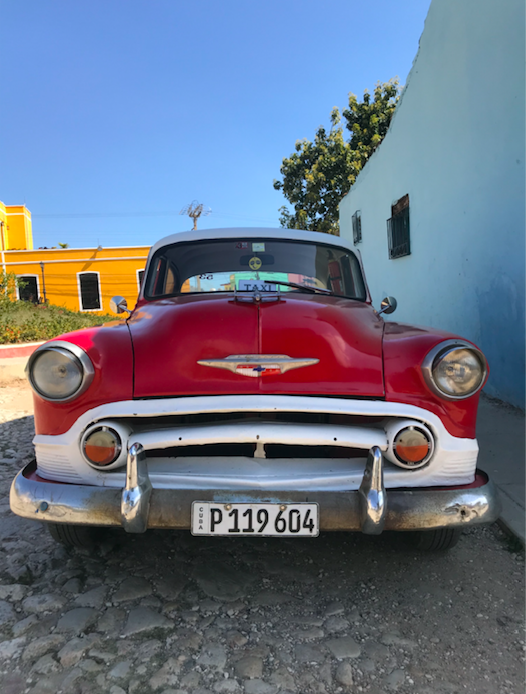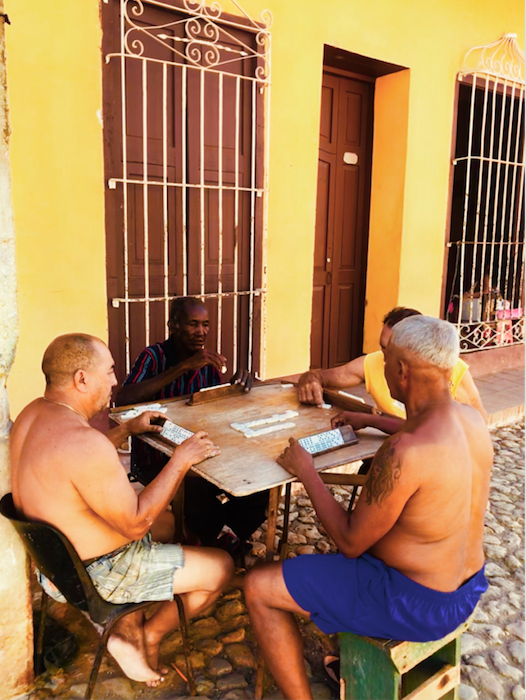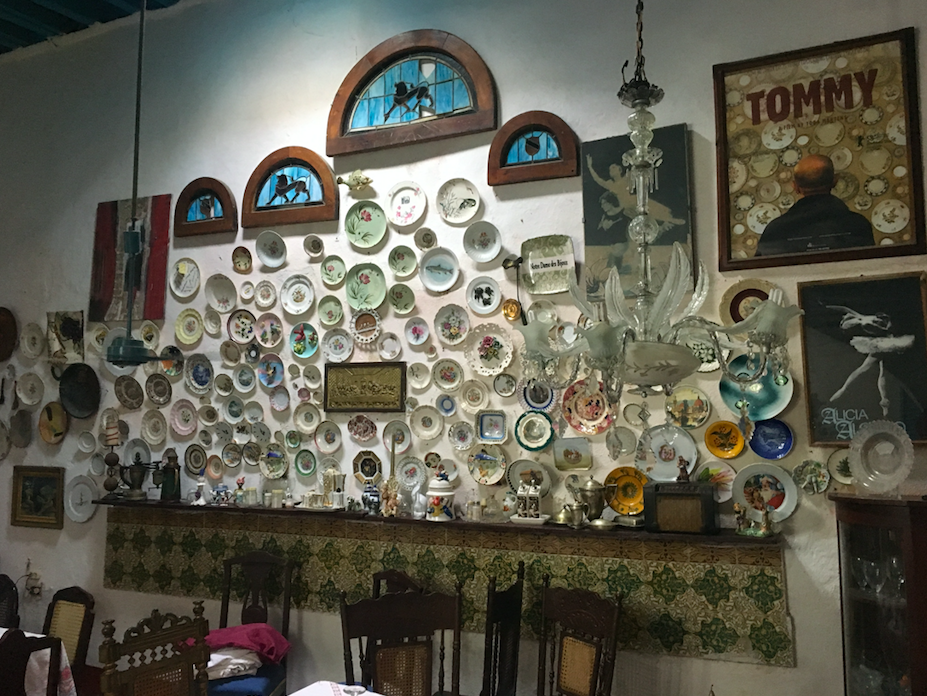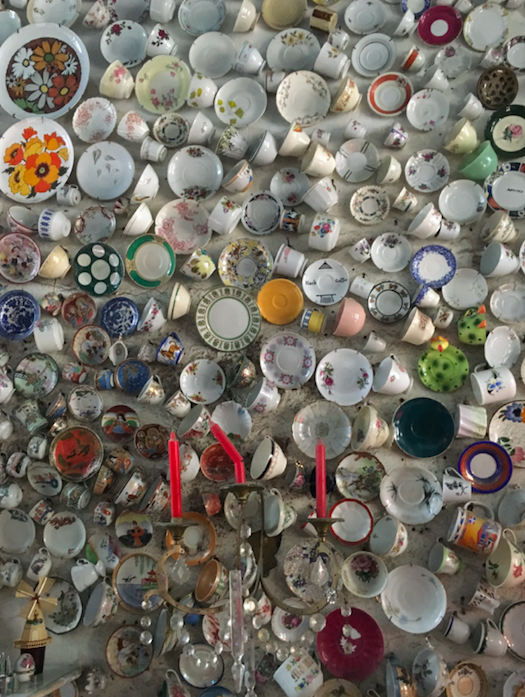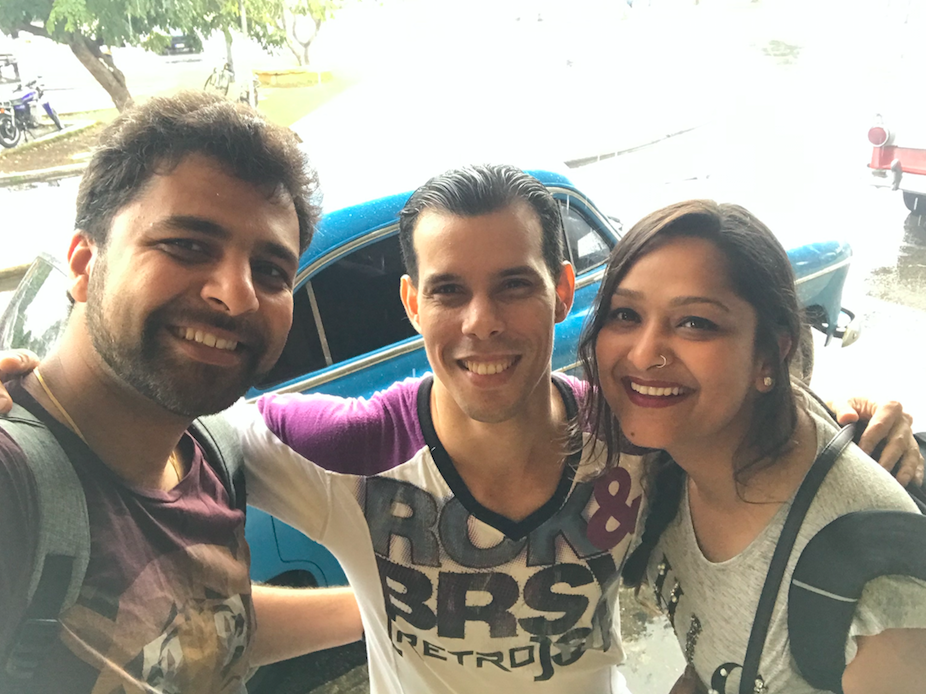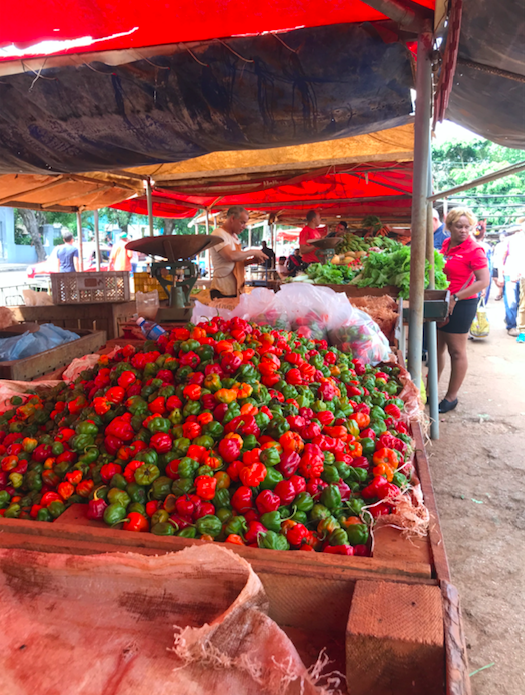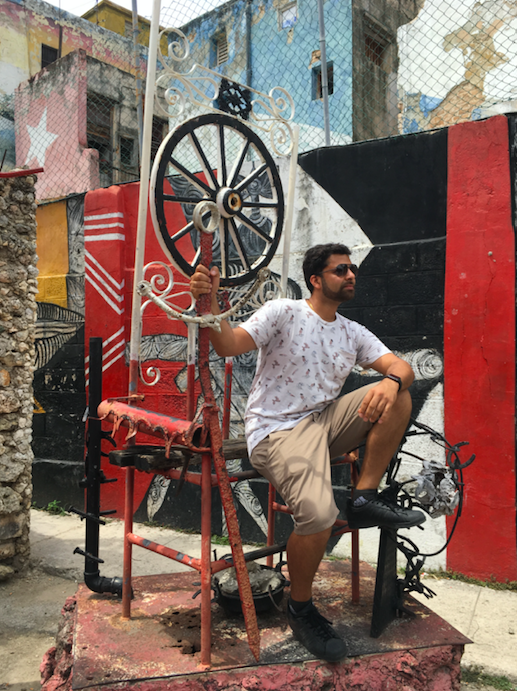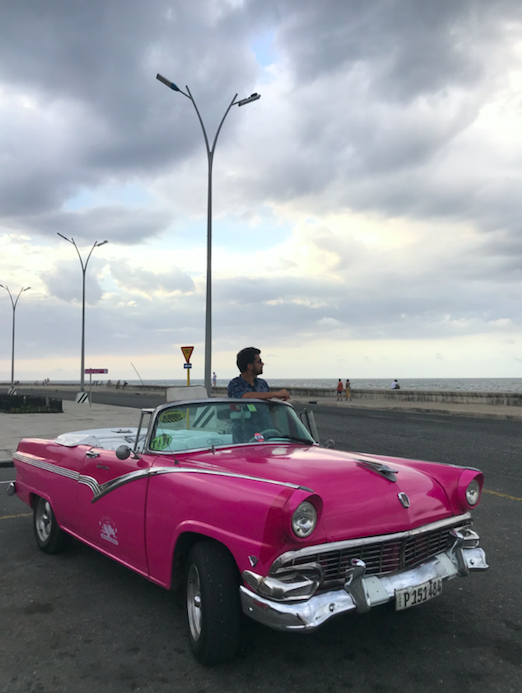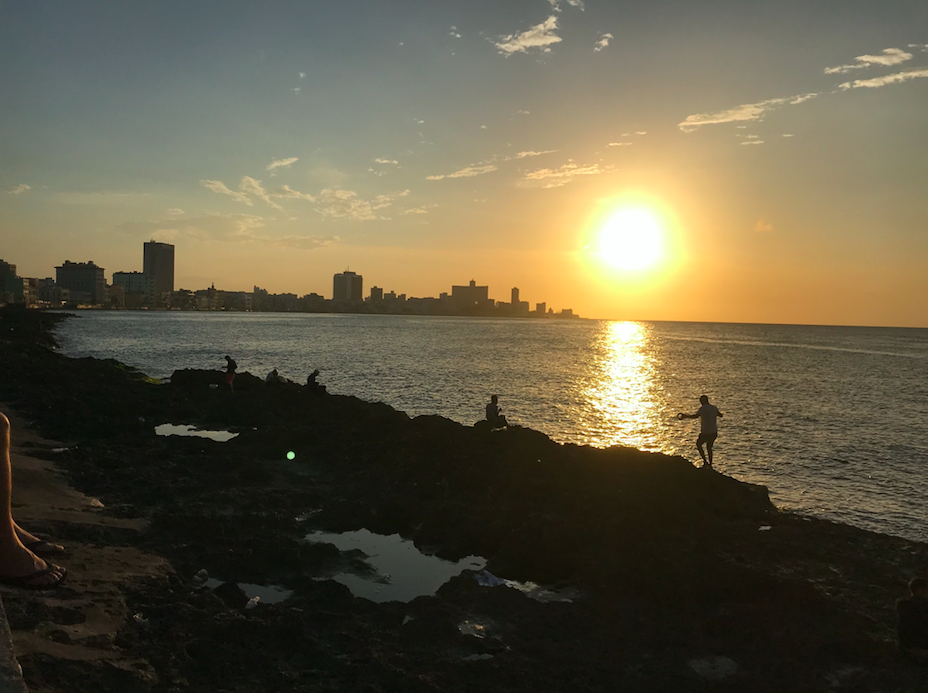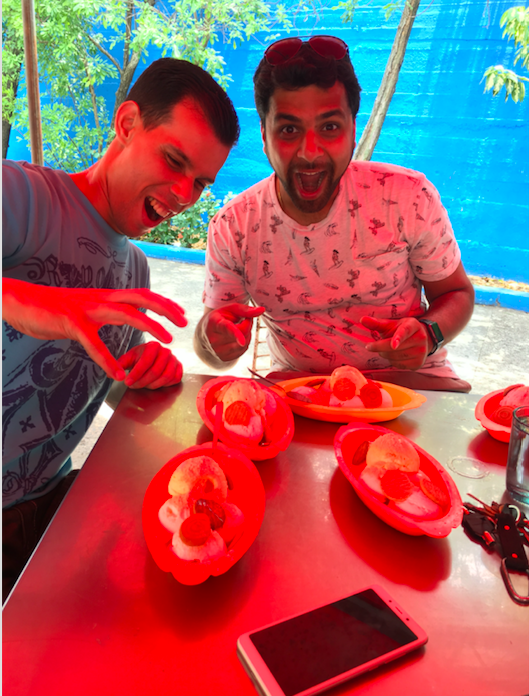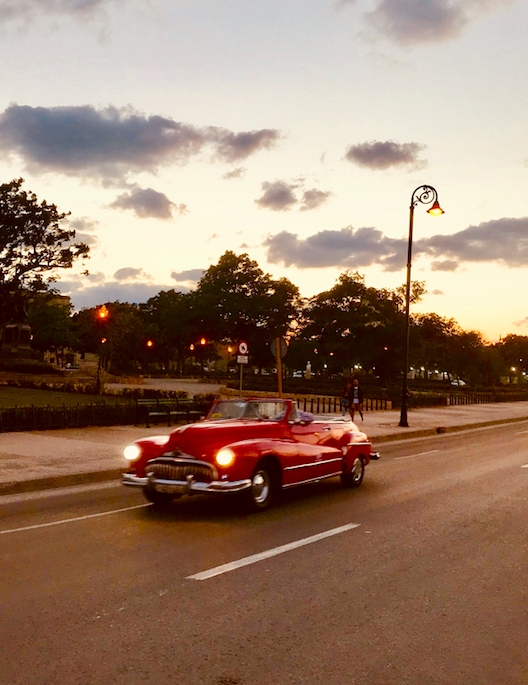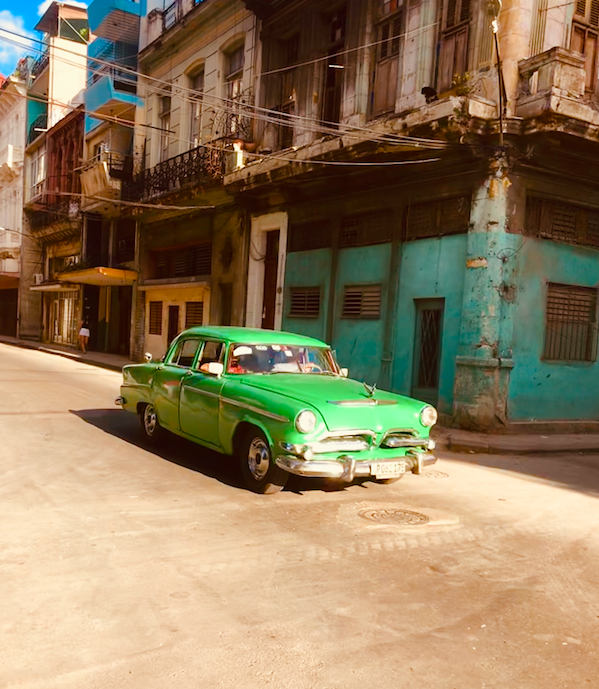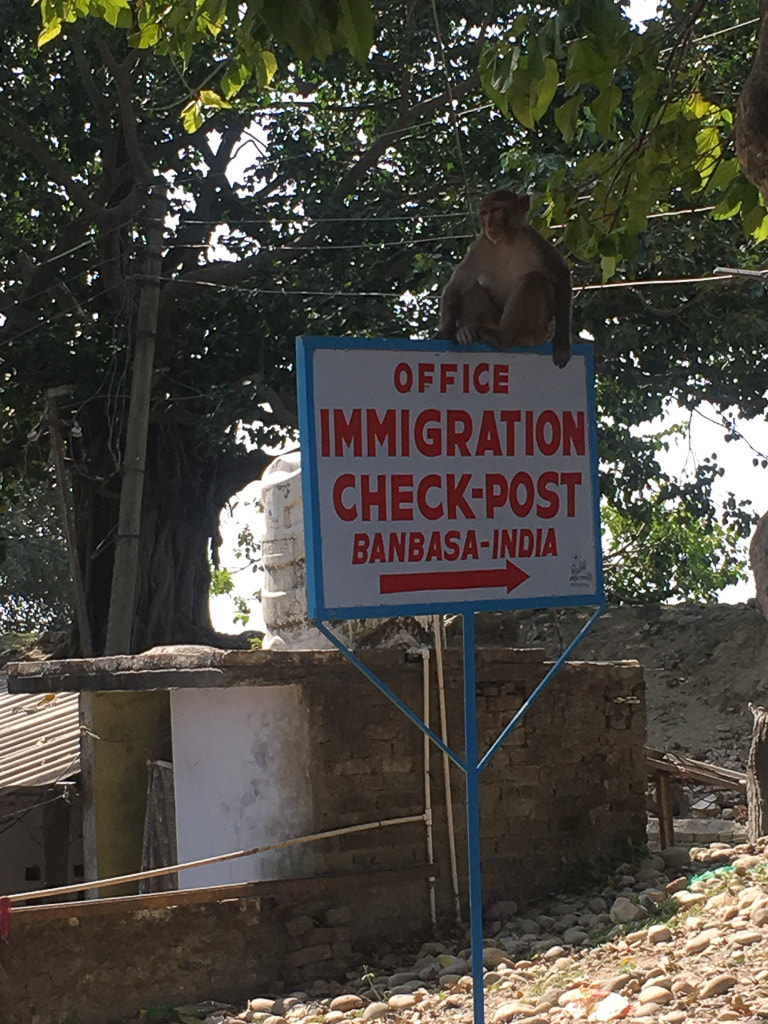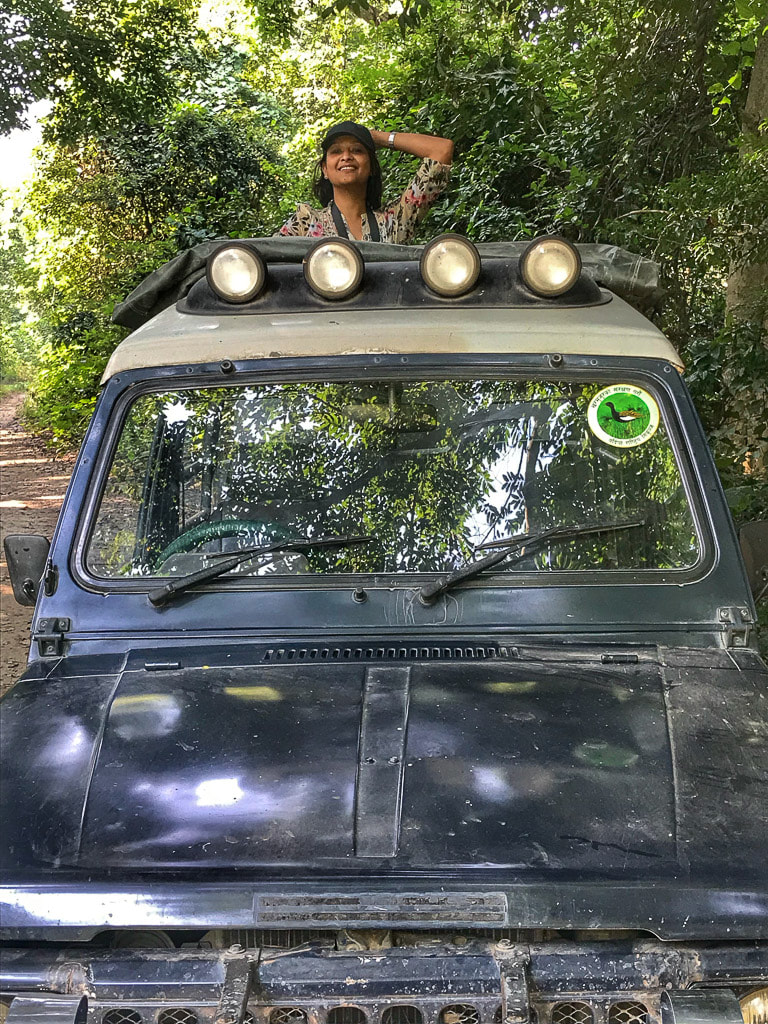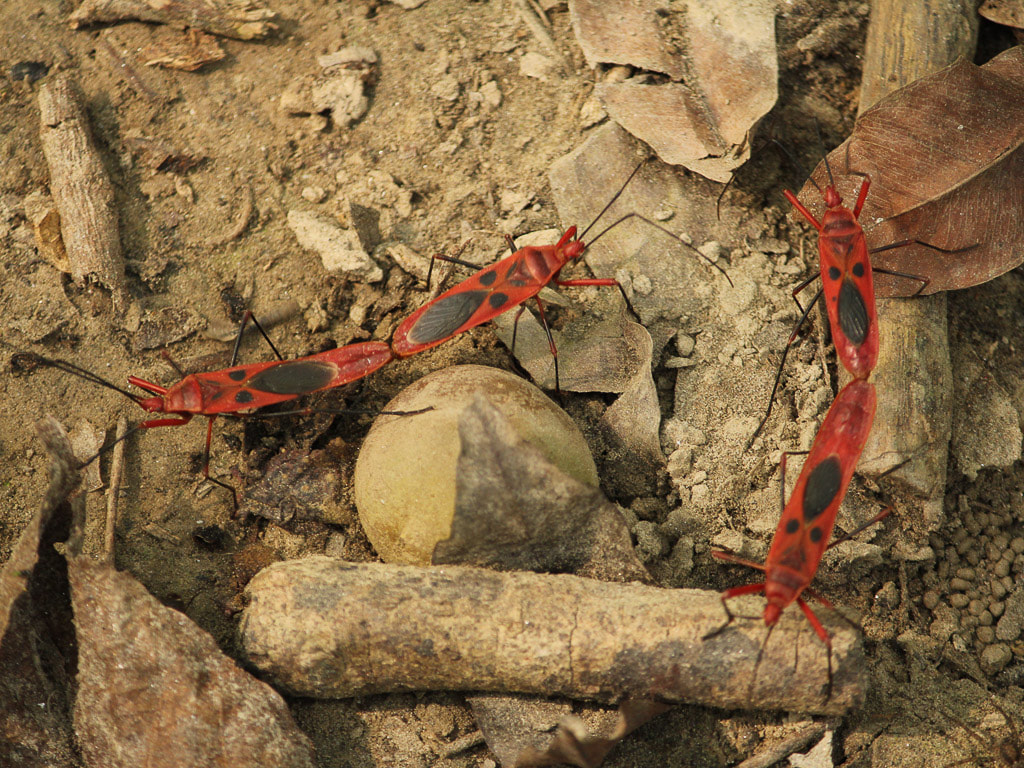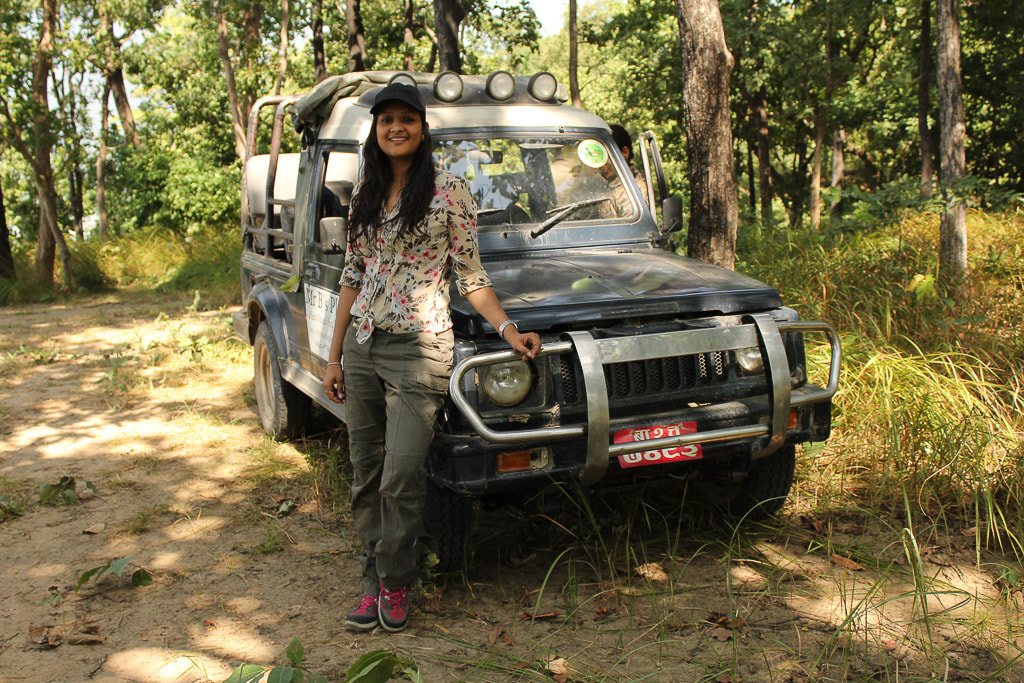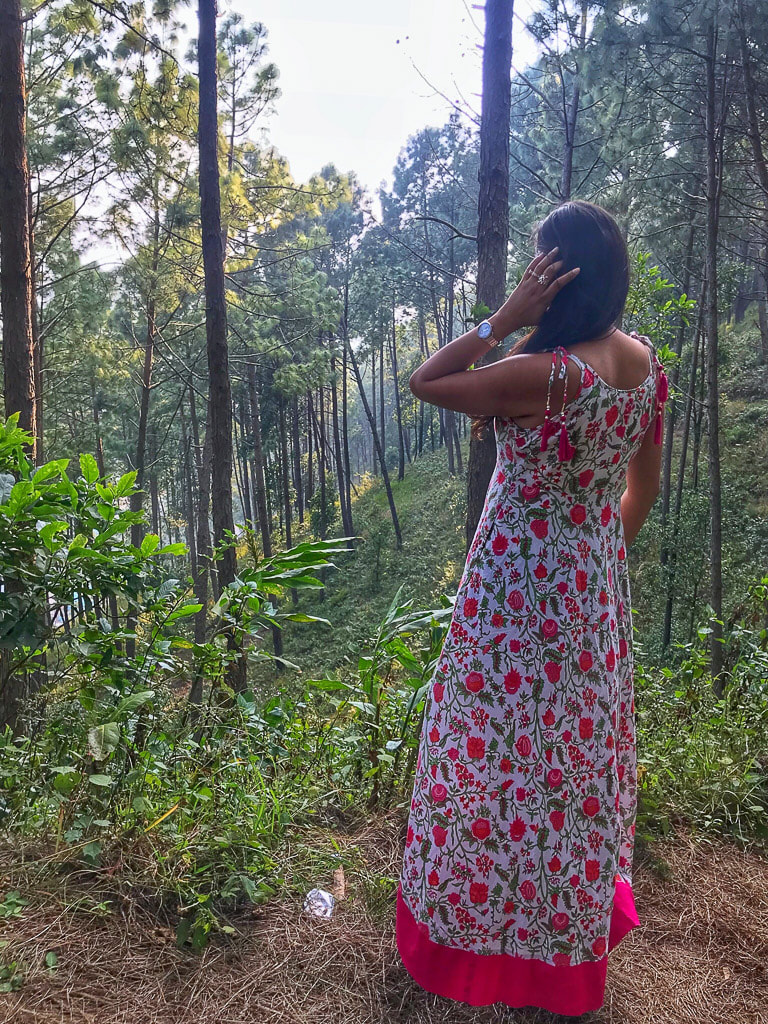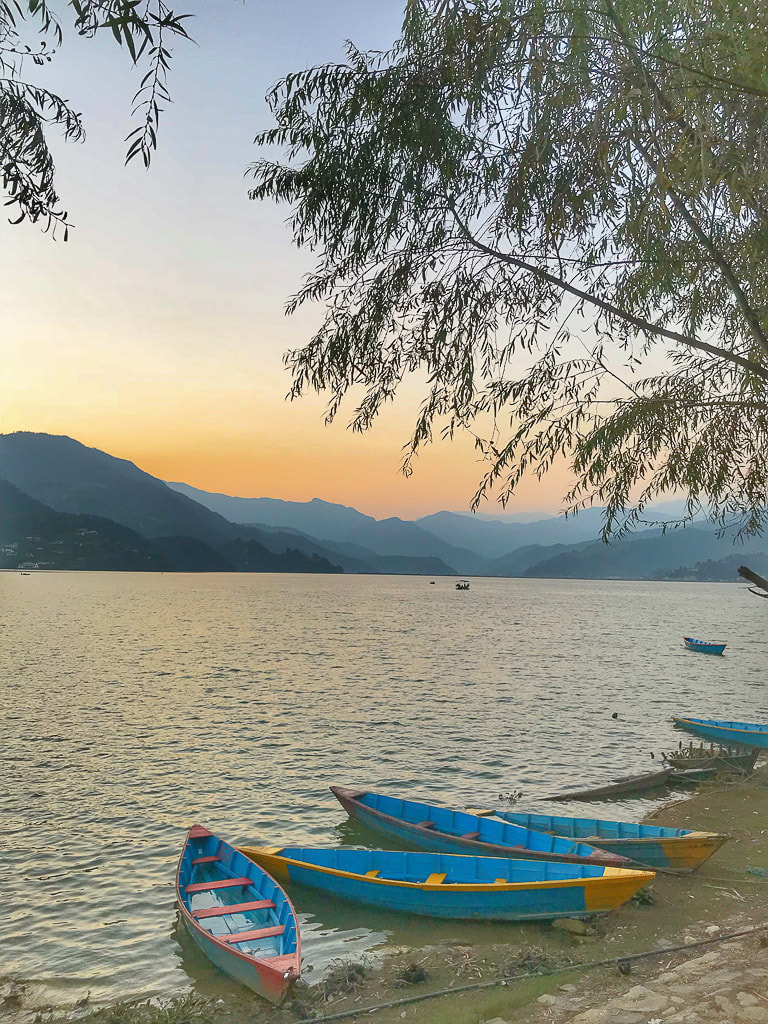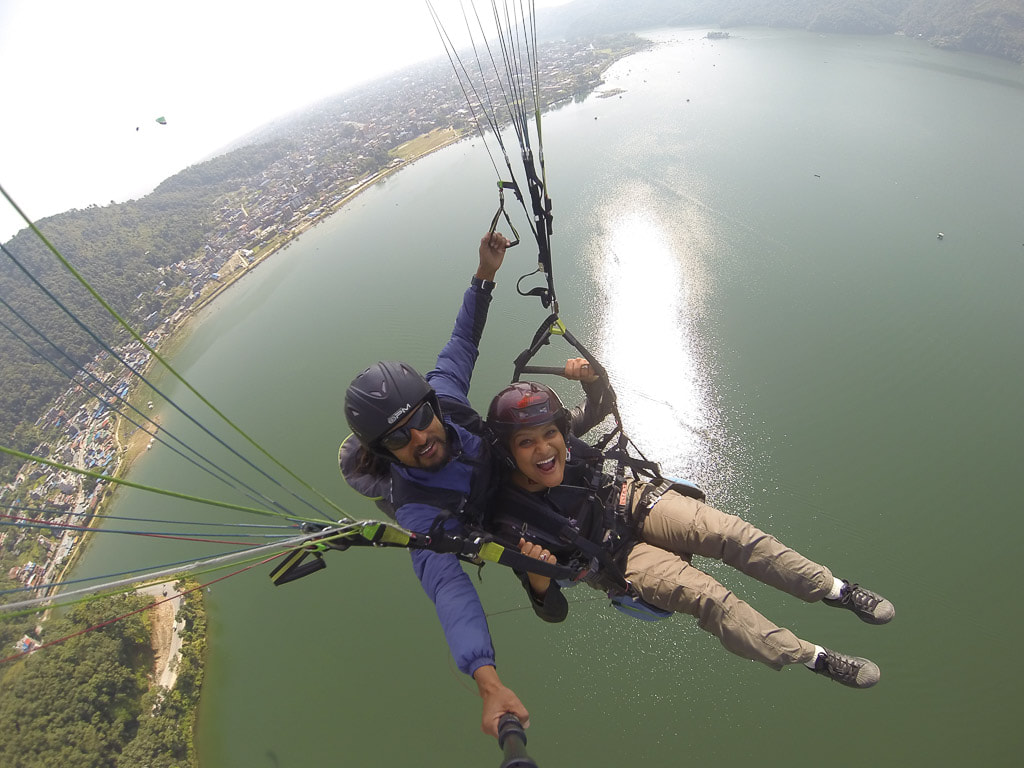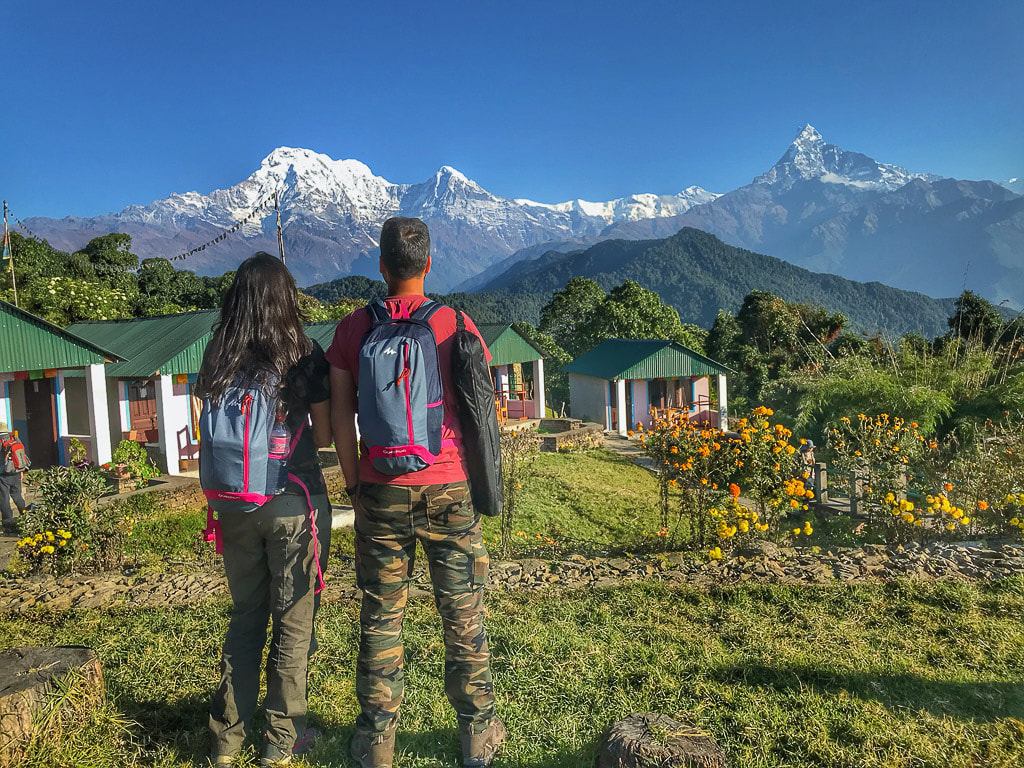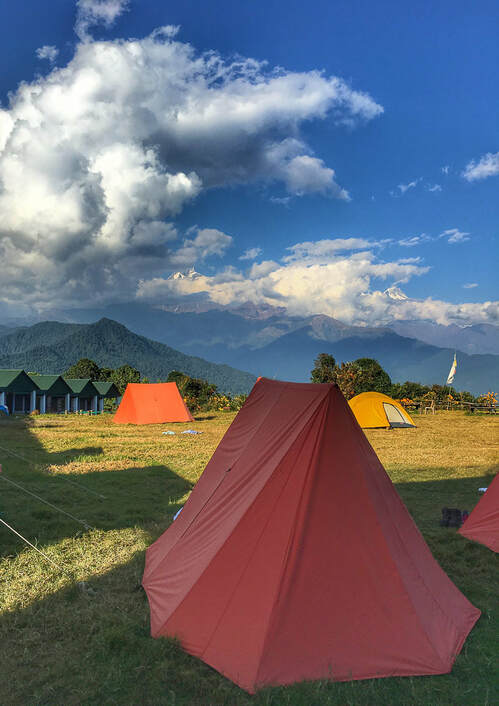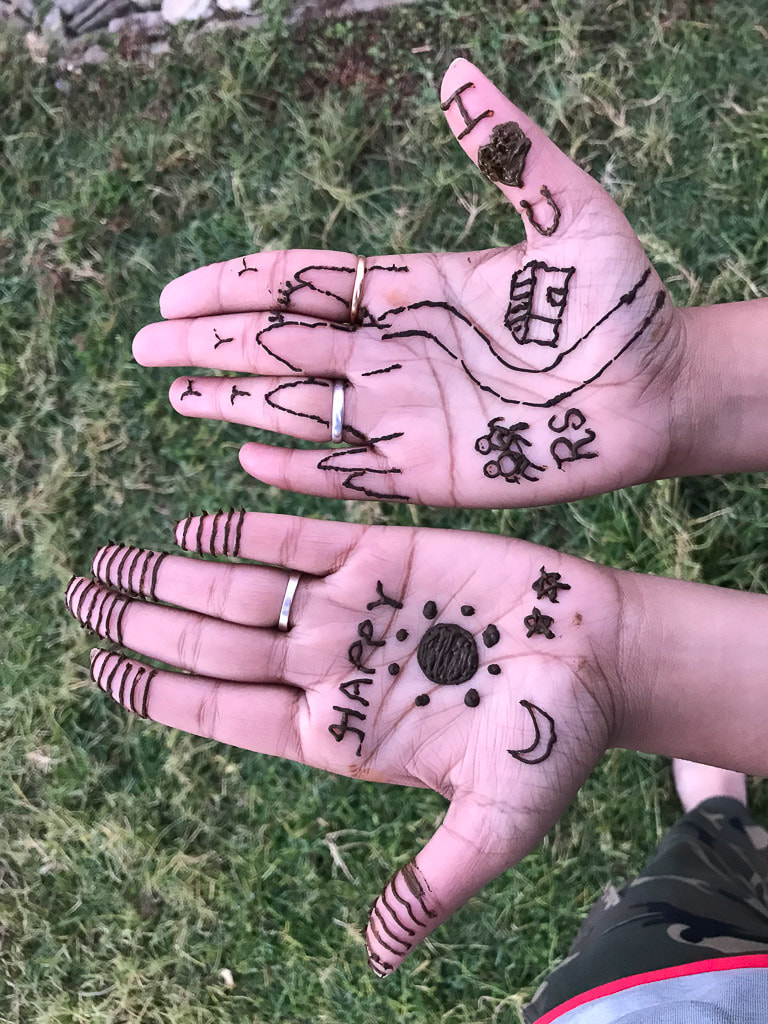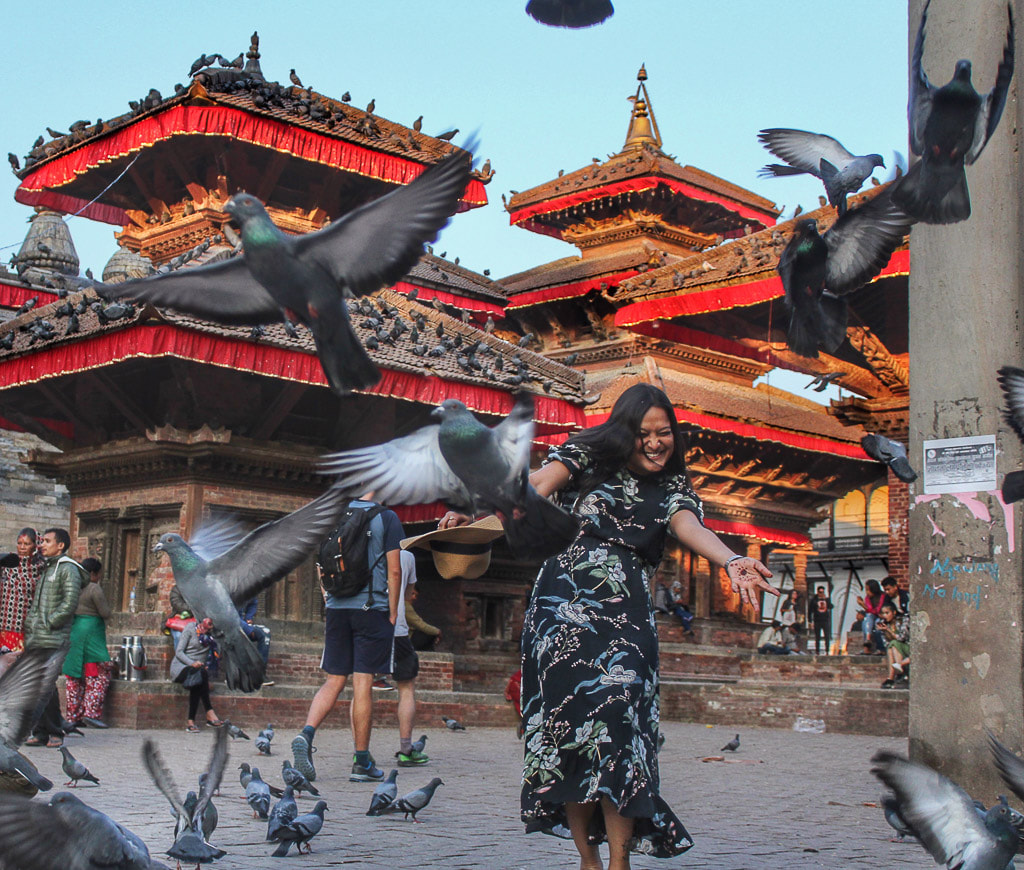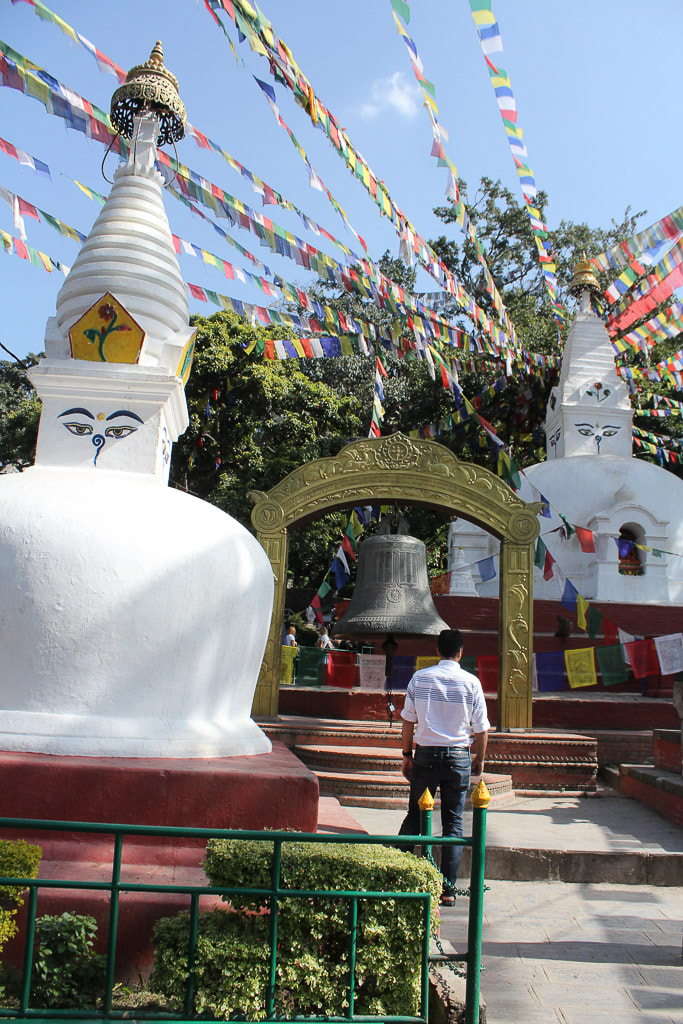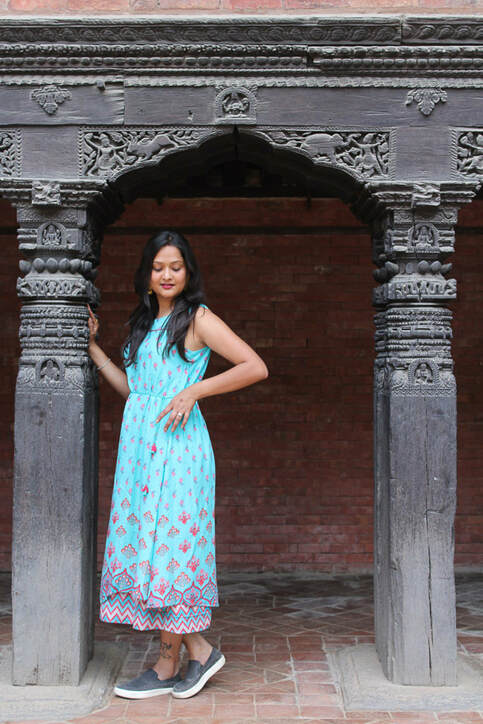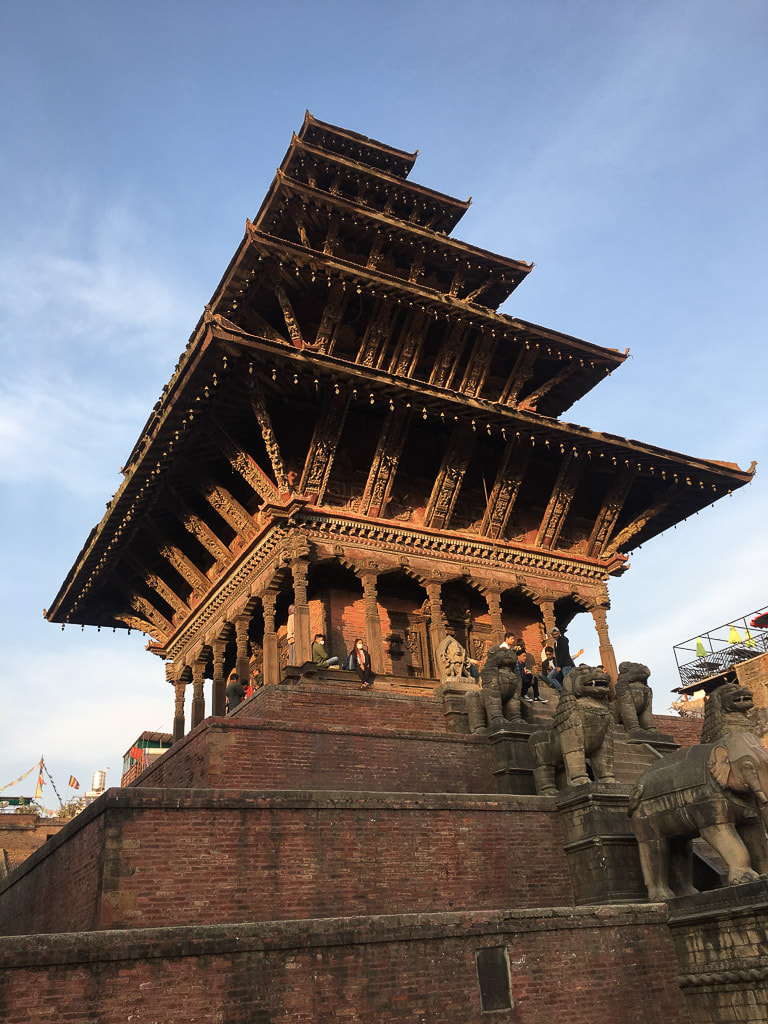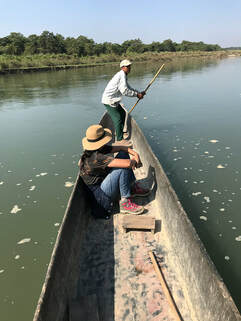HavanaWe discovered Havana in two parts – 3 days when we landed and 5 before flying back to the states. We boarded in Miami for an hour long flight to Havana, but as Sidhika says, it felt like we sat in a time machine instead which took us back at least a 100 years. Most of the cars were from the mid 20th century – the lime green Chevys, the maroon Fords, and the purple Cadillacs. Most buildings were at least 70-80 years old with no maintenance work done ever. The best way to experience the city is to stay in casas, or the private BnBs, which are in abundance across the city. Everyone talks only in Spanish, period. Colourful clothes hanging in the balconies, proud fat naked men smoking cigars in every nook and corner of the street and music in the air. What you are imagining now, is Cuba. Cent percent. We stayed at one of the BnBs in central Habana, which is where the real culture resides. Old Habana, a.k.a. Habana Vieja, which has been restored significantly in the last 30 years is the area near the Capitol. A 2-3 km walk around the capitol and you will see innumerable bars, restaurants and palaces. We spent all our time absorbing the culture in these streets. Talking to the locals and sitting at bars with them at Buena Vista made us feel a part of the community. One of the best walks in Havana is the walk along the sea (the Malecon drive) where the walls are not enough to stop the gushing water from the sea to splash on the roads. After spending three nights in Havana, we drove in a taxi collectivo (shared cab) to Trinidad, the cultural centre of Cuba. From Trinidad to Cienfuegos and then back to Havana. The second time we were in Havana, Cuba already felt like home to us. Our Airbnb host was better than we could have imagined. He was a young Cuban guy who spoke very fluent English and helped us plan the next 5 days in Cuba the best way possible. He recommended us restaurants which were the real hidden gems. The best breakfast place. Four out of five days we had our breakfast there. He showed us around places to go for lunch, dinner and even the bars which are famous amongst the locals. We went on a 6 hour walking tour with him and we talked about everything Cuban and everything Indian. It felt like a real exchange of culture in those 6 hours. We talked about what the Cubans feel about their government and the revolution of 1958. We got so intrigued that we bought a book on Cuban history and read through it in the next two days and then discussed more with our host. When in Havana, there are a few things you just cannot miss. We drove around the city in a pink open air Ford 1956. The drive was more special since it was Sid’s birthday on 7th and this is something she wanted to do since she saw it in one of the Bollywood movies. The other is the Fabrica de Arte or the Art Museum near Vedado. In a city like Havana which seems to be stuck in some ancient times, this is a museum of the future. The kind of art (paintings, sculptures, music etc.) here shows how open minded Cubans are. The best part of the museum is not just the museum, there is a theatre inside with plays in Spanish and live music performances by different artists. There are 4 bars inside the museum and 3 cafes which serve great food. The museum is open Thurs – Sun, 8 PM onwards and has an entry of 2 CUCs. These were the best 2 CUCs we spent while in Cuba. Trinidad & Santa ClaraThey say that Trinidad went to sleep in 1850s and never really woke up. So true. Horse-ridden carts, people commuting on horses (yes, that’s true) and music in the air. That’s Trinidad for you. Trinidad was our favourite of the four cities we visited in Cuba. From the most hospitable people, to the best music in the country, Trinidad takes you back in time and makes you wish that the clock never ticks. Playa Ancor, or the Ancor beach is the best beach on the southern coast of Cuba and just 6 kms away from Trinidad. Our Airbnb host took us around in his old white Peugeot to a few other lesser known beaches as well. The valley of sugar mills was also close by and it takes you back close to 150 years ago when Cuba was the world’s largest exporter of sugar. The sad part though is that the sweetness of the sugar was at the cost of a million bonded labor or African slaves who were working in the sugar mills in inhospitable conditions. From what we know, the average lifespan of a slave once he started working was not more than 4 years in Cuba. It was cheaper for the masters to get new slaves than to keep them healthy, and hence, as soon as a slave got ill, he was quarantined and thrown away once dead. There is a tree here which is 600 years old and has seen everything from the discovery of Cuba in 1519 to what it is today exactly 500 years later in 2019. Plaza Mayor is the most happening place in the city with tones of cafes and bars selling Cuba Libre, Mojitos and Daiquiris. Anything with Rum (or Ron in Cuba), in highest probability, the cocktail would have originated in Cuba. Our Airbnb hosts’, Luis & Taimi, full time profession is to host tourists and take them around in their car as per their itinerary. They drove us from Trinidad to Santa Clara, the city with the mausoleum of Ernest ‘Che’ Guevara. It is a much bigger city than Trinidad but nothing really to see and experience other than the museum of ‘Che’. This is the city where a lot of Cubans from nearby small towns come to shop for the month, since it has large supermarkets and probably more choice than they usually get in their small towns. The Santa Clara Boulevard had a few nice bars and restaurants, where we grabbed a quick lunch before we moved to our next city, Cienfuegos. CienfuegosCienfuegos, also known as the Paris of Cuba, is also a big city as compared to Trinidad. We stayed here for 2 nights, but it was not even close to as beautiful as Trinidad. Cienfuegos primarily has two things to see as a tourist – Jose Marti Parque and La Punta. La Punta is small beach cum park cum bar where you can take a swim in the ocean while sipping a glass of pina colada. In fact, this place had the best Pina Coladas we ever had.
After spending two nights here, we took a taxi collectivo (shared cab) from Cienfuegos back to Havana. (Cost: 20 CUCs per person)
0 Comments
How do I describe Cuba? For us, it was the 40th country that we visited, and probably the most unforgettable experience for us both. Someone has rightly said that with Cuba, it is love at second sight. At first, you are just shocked, amazed and some might even feel like running away. Let me start with a few interesting facts about Cuba: 1. The small supermarkets here have only the following things: coffee, sugar, tobacco, liquor, milk and ketchup (no bread, or eggs, or chips, or anything basic that you can imagine) 2. The mid-size super markets have only the following things: coffee, sugar, tobacco, liquor, milk and ketchup (no bread, or eggs, or chips, or anything basic that you can imagine) 3. The large supermarkets have only the following things: coffee, sugar, tobacco, liquor, milk and ketchup (no bread, or eggs, or chips, or anything basic that you can imagine). Well may be some nachos. There is no typo here. It’s true 4. There are two currencies used here. CUC for travellers and CUP for locals. As a tourist, you cannot pay anywhere in CUPs and 1 CUC = 1.13 USD (after 10% surcharge specifically for USD and 3% conversion charges) 5. A phone connection costs CUC 175 per month (at least for a tourist, so say good-bye to being connected) 6. You can use wi-fi though to stay connected. Well, that is if you can find yourself a wifi park. What’s a wifi park? Good question. It’s a public wifi zone where modems are installed but you can only access it using wifi cards which cost 1 CUC per hour if you stand in a queue outside the telephone company office for an hour to get that card, or you can buy one such card for 7 CUC per hour in the black market in these wifi parks. The speed in these parks is a whopping 16-64 Kbps. After getting to know a little bit more about Cuba from our BnB hosts, we could understand the reasons behind the Cuban eccentricity a little better: 1. Every Cuban, irrespective of how much they earn, gets a ration card with which they can get the basic food supplies for dirt cheap. Based on the age of the person in the family, few things are provided at cheaper cost. For example, a 2 year old would get cheaper powdered milk while a 12 year old would get soy milk yogurt. 2. Every Cuban needs to be either studying or working. They cannot sit idle, else they are put in prison for 2-3 years. 3. Cubans who work for the government get a salary ranging from 10-150 CUCs a month (USD 10-150). There is no typo here, it is per month. However you get some benefits such as access to a cellphone, television, refrigerator etc. depending on your position. You also get pension post the age of 65. 4. No company is privately owned. All restaurants, hotels, utilities, even the film industry is owned by the government. 5. If you want to drive a private taxi, or let out your home on Airbnb, you pay a fixed commission to the government in the range of 60-1000 CUCs a month. 6. Because of the US trade embargo, there are just zero imports from the US although it is just an hour flight from here. Basic things are missing from this country. There are just so many more surprising facts that I can go on and on. We spent a good 14 days in Cuba, but they were not even close enough to explore the country. It doesn’t matter how much you read about it before coming, you will be startled for sure when you land is this wonderland. We spent 8 days in Havana, 4 in Trinidad, 2 in Cienfuegos and a day trip to Santa Clara. I have described my experiences in each city separately here.
After leaving Dehradun for Nepal, our last halt in India was Rudrapur, a small town in Uttarakhand around 250 kms away. It was probably the least interesting place we have visited in the complete journey. If we were time-bound, no way we would have spent our night in Rudrapur. As per an office colleague who happens to be from Rudrapur, except an ‘Olive Cafe’ and ‘Sardarji ke momos’, there is nothing to do there. Trust me, even they are not worth the visit. However, if you are on a road trip, it is not about the destination anyways, it’s the journey that matters. But when it comes to our journey from Dehradun to Rudrapur, even the journey is quite hideous. Broken roads and dusty surroundings all around UP makes the journey quite tiresome. It took us a good 7 hours to reach Rudrapur from Dehradun. Thank God we left early in the morning. The next morning we left from Rudrapur to enter Nepal. The roads from Rudrapur to Bhimdatta (the first city you hit when you enter Nepal from the western side) are surprisingly very good. It took us less than 2 hours to hit the Nepal border. You would expect a broad road and a nice checkpost when you exit India and enter Nepal, but it is nothing close to what you would imagine. The border is almost a muddy road with multiple police check posts from both nations. Here is the detailed stepwise process to enter Nepal (you can skip this section, it’s purely informative):
All this took us a good 2 hours to complete the formalities. Nepal’s E-W Expressway is a 2-lane highway but the number of vehicles in the country is less I guess, that you can easily drive at good 80-90 km/hr on that.
The Juice: 1. The border check post opens in intervals to let the vehicles pass. There are two hour intervals with two hours break, so time your entry accordingly. Check for the timings online before you go since they keep on changing. 2. Don’t expect a fancy international border. Indian state borders are fancier than this international border. 3. Driving in Nepal is more difficult than in India. People do not care about the vehicles on road and walk on highways carelessly. There are multiple accidents everyday owing to this. Be extra cautious while driving here. Our first destination in Nepal was planned to be ‘Bardiya National Park’. Bardiya is quite untouched and the largest national park of Nepal. It has very few tourists owing to its location in the western part of Nepal. Since most tourists fly down to Kathmandu which is in the eastern part, Bardiya sees much lesser tourists as compared to the Chitwan and other forest areas around. We reached ‘Mr. B’s Place’ in Bardiya National Park at around 5 PM because of the time it took to find the RTO and validate our car permit. It was a great place to stay with amazing food and highly hospitable hosts. The day ended with a good dinner and a personal campfire for me and wifey set up by the hosts. My keenness to explore jungles is beyond anyone can imagine. That is one of the reasons we have 6 national parks in our itinerary across India. I have seen many animals in the wild, but a cat. And the next morning, we were out in our jungle jeep to spot one. We booked a full day safari, leaving no stone unturned to spot a cat. We left at 7 in the morning. Mr. B’s place is located right at the entrance gate of the park, so we were inside the park within 5 minutes. The park welcomed us with a shallow but a fast flowing stream of water, deep enough that no regular vehicle could have crossed it. The safari ride was a mix of jeep safari and short walks at times. We stopped over at multiple places near various streams since that is the best place to spot animals. We spotted a deer, a fox, few butterflies and red pepper insects, but came nowhere close to a cat. We had lunch, in the middle of the jungle, which our rangers had packed before we left in the morning. We came back by around 5 PM, quite tired of sitting in the jeep all day long. After resting for a while, Mr. B lit a campfire for us. Conversations with Mr. B over the campfire were the best part of the day. He and his wife shared their experiences of living in the western part of Nepal and how they started of really small and today own a nice little resort located right where more visitors to Bardiya would like to stay.
The Juice: 1. Bardiya National Park is one of the less visited parks in the country. It is quite beautiful but the density of animals here is not too high. If you are planning a short trip to Nepal, you can skip it, but it is a good stopover if you enter from the western side. 2. Indian currency is widely accepted in Nepal, but many places would accept only notes of denomination 100. Credit/debit cards are not accepted in Western Nepal and rarely in the eastern side too. Most Indian Debit cards won’t even work at ATMs (check with your bank before coming), so ensure you carry enough bundles of 100 rupee notes before you enter Nepal. 3. A private jeep safari in Bardiya costed us NPR 12000 (INR 7,500). You can share it with other guests to save on the cost. The price is for a jeep and it can accommodate upto 6 guests along with a driver. Tansen was a pitstop for us on our way to Pokhara from Bardiya. The drive from Bardiya to Pokhara is almost 11 hours and Tansen was an obvious choice owing to it’s location almost halfway. The other option we had was Lumbini, which is considered to be the birth place of Buddha, but we could not find decent accommodation/homestay there and hence we drove a little ahead. We stayed at the City View B&B in Tansen, a small homestay which has the best balcony in town with a beautiful view of the mountains, and hosts who can sit with you all day and tell you stories about the city, the nation, themselves or anything at all. They recommended a small hike upto the Buddha statue and the City watch tower which is pretty much the only thing to do in Tansen. Royal Inn and Nanglo West are two cafes in town which serve the best momos and Thukpa. They have something called the Curry momos (C-momos) where they serve steamed momos in a tomato curry. I don’t think I have had better tasting momos ever in my life.
The Juice: 1. Tansen is a small hill station with nice short treks and hospitable people around. Do pay a visit while you are on your way to Pokhara and you won’t be disappointed. 2. Alcohol is sold on every other shop in the whole nation. There is no permit or extra taxes on the sale of alcohol. You will find even the smallest roadside grocery shop selling all kinds of beer and local whiskey. 3. Tansen did not get it’s name from Tansen, the singer in the Mughal court, in case you are wondering. If there is one city in Nepal which cannot be skipped while planning a vacation here, it’s Pokhara. In fact, I can go to an extent and say that if there is one city in Nepal worth visiting, it’s Pokhara. Sadly, there is no airport here right now, but it is planned and hopefully by 2019, there will be an international airport in Pokhara. Pokhara has the best view of the mountains in Nepal, specially Mt. Machupuchaare, famously known as the FishTail mountain. You cannot view Mt. Everest from Pokhara or from Kathmandu, in case you are wondering. And if someone tells you that the mountain you see at a distance there is Mt. Everest, then you are just being fooled. To have a glimpse of Mt. Everest, you can either go for the Base Camp trek or take a flight tour which hovers on top of Everest and gets you back in an hour, costs around INR 10,000 per person. Pokhara also has some of the best cafes and restaurants. To name a few which we visited and were really awed by were — The Busy Bee Cafe and Freedom Cafe to spend an evening partying, Fresh Elements and Olive Cafe for a nice lunch, and ‘You and I’ for breakfast sitting by the lakeside We spent two evenings strolling by the lake and talking about how we had spent the last two months, what our best memories of this trip were and what are our plans for the next few months. It was while strolling by the lake when I was also preparing Sidhi for flying the next day, literally. We were booked for paragliding right above Lake Phewa, starting from Sarangkot next morning at 10 AM.
The Juice: 1. There are hundreds of paragliding companies in Pokhara, we chose the BlueSky paragliding since they boast to be one of the oldest and their divers had a minimum of 10 years of experience in flying. I’d highly recommend them over many others who would offer a cheaper price but won’t be able to provide you with a similar experience. 2. We stayed at the Green Peace Lodge in Pokhara, which is owned by a Sherpa. While in conversation with him, we learnt that automobile prices in Pokhara are 2.5x that in India. Ford Ecosport in Nepal costs a whooping INR 24,00,000. Now we knew the reason for so less cars on the road and also why taxis in Nepal are super expensive. 3. Try different cafes and restaurants everyday. There are plenty of them in Pokhara and none of them would really disappoint you. The food is also quite cheap in Nepal, along with cheap liquor and Sheesha. Adventure sports have a special place in my heart. More than the fear to die, it gives me a reason to live. What is life anyways if it is mundane and boring? I have done sky diving, bungee jumping, scuba diving and the likes earlier as well. This was my second encounter with paragliding and similar to my first experience, it was just spectacular. My instructor asked me if I am okay with some hoola-hoops in the air and who am I to say no. Bring it on!! If you ever get a chance to visit Nepal, Pokhara is the place to go. One of the most beautiful cities in the world with plenty of adventure sports and treks to do. When it comes to Sidhika, she loves to indulge in exciting and thrilling stuff herself, but with a small caveat - fear of heights. If you ask her to jump into the ocean 10,000 meters deep, she would not think twice, but ask her to look down from a 3-storey building and she would be scared to bits. The pushy partner I am, I convinced her to try paragliding. Trust me, if I had not prepaid for her jump and if she was not a 'baniya' herself, she would have backed out for sure :) Look at her in the video on how cheerful she seems to be, but only I can imagine (or, may be not) what must be going on in her mind. She did not sleep the night before just because she knew that she has to jump off a cliff next morning, it does not matter that she was going to jump with a parachute attached and would be accompanied by a 12 year experienced diver. We stayed in Pokhara for almost a week, and why not, it is the best place to be if you are in Nepal. And this is an affirmative statement after roaming through almost all of Nepal from left to right. Nepal is not only famous for being home to the highest mountain in the world, but is also famous for the treks that let you look at that beauty first hand. Not only Mt. Everest, Nepal boasts to be home to many such beautiful peaks, one of which is Mt. Machupuchaare. We wanted to do a trek when in Nepal, but being on a road trip, did not want to get onto a strenuous trek which makes our journey further more tiring. Hence, we were looking for a short trek which could give us a flavour of trekking in Nepal, and we hit the bull’s eye. Just an hour away from Pokhara, from the city of Kande, starts a trek to one of the most amazing places in Nepal – The Australian Camps. As the name suggests, it is a place setup by some early Australians who camped up here long back. It is a 1.5 hour long trek (one-way) at moderate speed. The trek itself is quite beautiful and takes you through dense forests and native villages. The view throughout the trek is amazing with the view of the long valley through the mountains but you don’t really see the Annapurna range while you are walking. It is only when you hit the top that you suddenly realise where you have reached. Mt. Machupuchaare and the complete Annapurna range is right in front of you. We could have trekked back the same day from Australian camps but what’s the fun being right in front of the mountain when you don’t even see the sun rising through the peaks and troughs. We decided to stay there overnight. You won’t find these hotels online but there are enough and more places to stay once you reach. The best view was from the ‘Angel’s Guesthouse’ and we decided to spend our night there. The camps in the garden of the guesthouse were so tempting that we sacrificed the comfort of staying in the room for the first view of the sun from our camps in the morning. It was Karvachauth the day we trekked up and Sidhi loves to follow the traditions as much as she can even while we are travelling. For the last four days, she was looking for a mehndi artist to put some festival mehndi on. Sadly, we couldn’t find any in Pokhara but what we did find was ‘Mehndi’. It was time for me to showcase the hidden artist in me while we waited for our evening snacks at the Angel’s. We had a comfortable sleep in our small tents setup in the garden at the Angel’s guesthouse. The next morning was the most beautiful morning we had ever witnessed. As soon as we unzipped our tent at 5:45 AM in the morning, we could see the Annapurna range receiving it’s first share of sunlight. We have seen many beautiful sunsets but it was probably the most beautiful sunrise we had ever seen. What made it more beautiful was the perfect setting surrounding us.
The Juice: 1. You might find it hard to find a parking space in Kande if you are driving yourself. Just request a restaurant in the area to let you park for the night and you are good to go. 2. Carry enough water and snacks for the way, once you are on it, there is nothing at all on the way to keep you refreshed till you reach the top. 3. Do not do a day trip to Australian camps, a lot of tour operators might suggest that. The best thing there is the sunrise, just don’t miss it. We woke up early in the morning and hiked back from Australian camps to Kande. We were at the base by 9 AM and drove straight to Kathmandu. I remember as a kid that everyone I knew who was getting married went to Kathmandu for their Honeymoon. My expectations from Kathmandu were very high, I pictured it to be one of the most beautiful places in Nepal. Well, to my disappointment, Kathmandu was just the opposite. The earthquake in April 2015 did some real damage to the city. Nepal being not so rich as a country has not been able to recover from it just yet. There were broken roads in and around the city and the traffic was just unmanageable. Having said that, although the city itself is not anything close to beautiful, there are multiple tourist attractions which make the city visit worthwhile. Swayambhunath, Boudhnath and one of the most well-known places Pashupatinath temple are quite amazing. One of the most interesting fact at the Pashupatinath temple was the co-existence of monkeys and humans. There were innumerable monkeys all around the temple, jumping around on the rooftops but not one was even close to doing any mischief with the people around. Kathmandu was once ruled by a Hindu king. His sons developed different parts of the city in Darbar squares, the areas where they setup there palaces. These Darbar squares have beautiful pieces of architecture. Some of them got destroyed in the earthquake in 2015, and are getting repaired. Some structures however, withstood the tremors and are still standing strong. These could be found at the Bhaktapur Darbar square. Basantpur Darbar Square, Patan Darbar Square, Bhaktapur Darbar Square and the Kathmandu Darbar Sqaure are all located within a span of 20 kms are have a great visual appeal. They are the best amalgamation of the Hindu and Tibetan culture when it comes to architecture. I rarely give food recommendations, but two of the places in Kathmandu were to die for. One of them was the Blueberry kitchen & Coffee Shop (Rated 5 on TripAdvisor) and the other being Dwarikas (another 5 rated hotel on Tripadvisor). A visit to these two eateries can make your visit to Kathmandu worthwhile.
The Juice: 1. Do not expect a smooth ride in and around the town. The roads and the traffic are definitely going to play a spoilsport in your vacation. Go prepared! 2. Do not gamble in Kathmandu. Their casinos are the not at all tastefully done and the dealers are not fun either. You want to gamble, go to Sri Lanka! 3. Tripadvisor suggests great places to eat here. The ratings are quite genuine. Make your trip to Kathmandu a treat for your tastebuds, if you don’t end up enjoying anything else. This might actually happen! A trip to Nepal is incomplete without visiting the wildlife parks here. If you don’t get a chance to visit the western part of Nepal to see Bardiya, Chitwan is the place to be. In fact, Chitwan is a very different kind of wildlife sanctuary that you would ever see. If you visit a sanctuary, in highest probability, you would be out exploring in an open jeep, however in Chitwan, you could either be cruising on a canoe around the park or walking inside the park. We actually did both to ensure we do not miss out on any means of exploring the sanctuary. The videos below should explain what I am talking about.
Chitwan has some of the great resorts to relax, some amazing food joints to satisfy your taste buds and amazing people to interact with. In short, it is a lovely getaway for a few days away from the urban life into the wild. We roamed around the park on foot to reach the internal areas which are difficult to see in an open jeep. We really wanted to see a one-horned rhino close up. However, we were not able to spot one in our 4 hour safari. To our pleasant surprise, one of the baby rhinos came to visit us in our resort instead. It was unbelievable. The rhino probably lost his way and was super scared to be surrounded by humans, till one of the hotel staff shoed him away so that he can get back to the wild. Another unique thing to do in Chitwan is getting a shower by the elephants It seems weird and hence I could not do it. But Sidhi did it, and in her words, it was worth it.
The Juice: 1. Chitwan boasts of a cultural show in the evening. Don’t waste your money and time there. It is just a way to lure tourists but was not really worth it. 2. The canoe ride is just amazing. Don’t forget to carry your binoculars and a 18-55 mm lens if you have one. More than animals, you will see amazing birds there. 3. We met an Indian immigrant in Nepal (from Bihar) )selling the best Pani-puris we have ever had. Give it a shot, when in Chitwan. |



